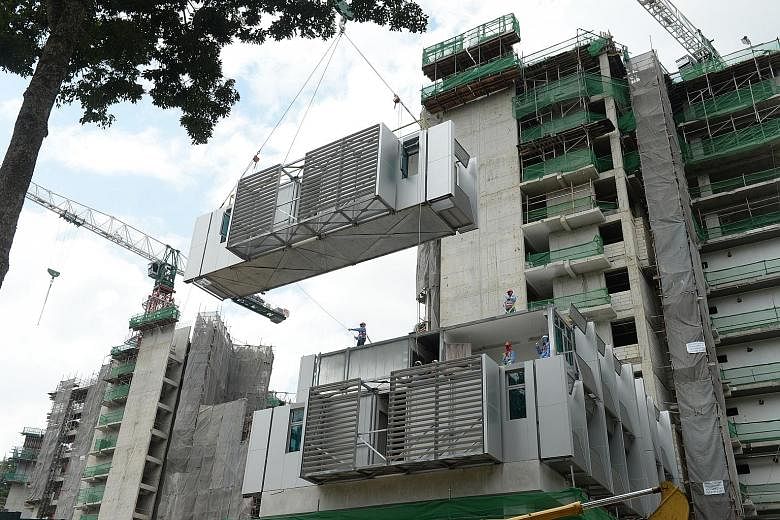Tunnelling projects for MRT lines and expressways may be completed in a shorter time in future and be built more quietly, as their designers will soon be required to adopt a framework now used for buildings.
Fittingly, this was announced yesterday by the Building and Construction Authority (BCA) at the site of three new Nanyang Technological University (NTU) residential halls that are being built "Lego style" - with entire rooms built elsewhere and then stacked on top of one another at the site.
The framework, under which designers and developers must meet a minimum standard of labour-saving methods and technology, or face penalties, will be extended to tunnelling projects.
For example, parts can be prefabricated - made elsewhere and assembled at the site - as has been done for the NTU project. This reduces work done on site.
"There is a lot of reduction of disamenities for the public because projects are completed faster, less noisily and with much less dust," Deputy Prime Minister Tharman Shanmugaratnam said of prefabrication.
He said BCA expects site productivity to grow yearly by more than 2 per cent over the next five years, beyond the annual growth of around 1.2 per cent over the past five years.
Mr Tharman, who is chairman of the National Productivity Council, visited the NTU site that is using a method where whole rooms are being made overseas, including interior fittings such as lights and fans. These are fitted out further in Singapore, taken to the construction site and stacked into a building.
This method saves up to 25 per cent to 40 per cent in labour, and 15 per cent to 20 per cent in construction time.
While the method costs around 18 per cent more than the conventional concrete construction now, Mr Tharman said costs can be reduced as more suppliers come on board. "The public sector is taking the lead in building up demand," he said.
The process involves more high- tech jobs in manufacturing the rooms and fewer low-tech jobs on the construction site, he said. "We are going to be short of manpower for the long term, we want to offer higher-quality jobs, and this is the way to go."
BCA will have 10 integrated construction and prefabrication hubs by 2020 where building components can be made in Singapore.
Speaking about the new framework for tunnelling projects, BCA chief executive John Keung said civil engineering projects are expected to take up a larger portion of Singapore's construction demand in future, up from around a quarter now.
"It is not a building, so you have got to find a different way to encourage them to make (a tunnel) easy to build," said Dr Keung, adding that BCA is working with the Land Transport Authority and other regulatory bodies to develop the framework. The aim is to achieve 25 per cent to 40 per cent productivity improvements.
Civil engineering firm KTC Group's chief executive Rajan Krishnan welcomed the move to encourage prefabrication for tunnelling. Besides tunnel linings, which are already made off site, track beds, drainage systems and walkways could be precast too, he said.
"The final cost remains to be seen as it is a balance between labour, equipment and land space, but it would be more productive and safer because you have fewer people and equipment working underground," he said.


